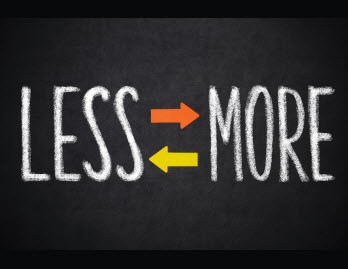Personalized TV Ads: Less Is More

Netflix, with its ad-free content, has profoundly changed the way consumers watch TV. Some estimates claim Netflix saves consumers more than six days of their life, or about 157.87 hours, per year in commercials not watched compared with a traditional cable provider.
To put this in context, the traditional hour of TV has almost 16 minutes of commercials.
This leaves broadcast channels and the service providers that carry them in quite the predicament. Consumers are getting used to a commercial-free experience, which is certain to affect future programming. This is because ads play a critical role in funding the development of creative video programs, and if they disappear altogether, then the ecosystem will not be nearly as vibrant.
I believe we’ll soon see a future in which there are far fewer advertisements, but more personalized content within those advertisements when they do play.
I’m not alone in this thinking. According to analyst firm Ovum, data will transform the business of visual entertainment and drive the biggest shift in the balance of power in TV in the 2020s. We’ll see increasingly granular, personalized TV services, as the main unit of TV consumption continues to shift from households to individuals.
To make this personalized advertising approach successful, service providers working with broadcasters need first to identify the target viewer persona across multiple devices. This can easily be done using Netflix/Hulu-style profile selection linked to a consumer’s Facebook or Google account. However, with privacy being front and center in the U.S. right now, service providers will need to manage consent through an opt-in before information is collected. Once access is granted, the service provider can use various data sources like social media and viewing habits to create a “360” profile that is unique to the viewer.
They have this data – they just need to know how to leverage it.
The main question here is: Will consumers be more willing to share private information if it means getting less, but more relevant, commercials during their favorite shows? While privacy is important, I’m willing to bet consumers would be willing to participate, at least at some level, if it means less friction and fewer ads.
If done right, personalized ads can generate much more revenue per view than general targeted ads today, which means a consumer could see a fraction of the commercials they do now, but the same revenue is obtained.
While it may seem like fewer commercials mean less overall revenue for broadcast and service providers, more targeted ads would increase interaction and potential purchases. According to a survey conducted by ad insertion company Yospace, 78% of audiences are more likely to take notice and 55% are likely or very likely to look online for a product if they’re personally targeted by an ad.
Broadcast and TV content providers can look to offset initial losses with options like ad-funded free content or better incentives to purchase digital content.
We are seeing some very big telecom carrier moves in the media space, such as AT&T’s purchase of DirecTV, and this creates advertising inventory space to monetize from any screen the consumer is using. With this in mind, it’s clear the advertising business is a key revenue stream to consider and perhaps revamp entirely.
While advertisements aren’t going completely away, more personalized commercials are a clear next step as service providers look to further monetize their offerings by using customer data. This is the only true way to battle the idea that content should be commercial-free due to the likes of Netflix.
Besides, wouldn’t you want some of your 158 hours per year back?
Gary Miles is chief marketing officer of Amdocs.
Multichannel Newsletter
The smarter way to stay on top of the multichannel video marketplace. Sign up below.
